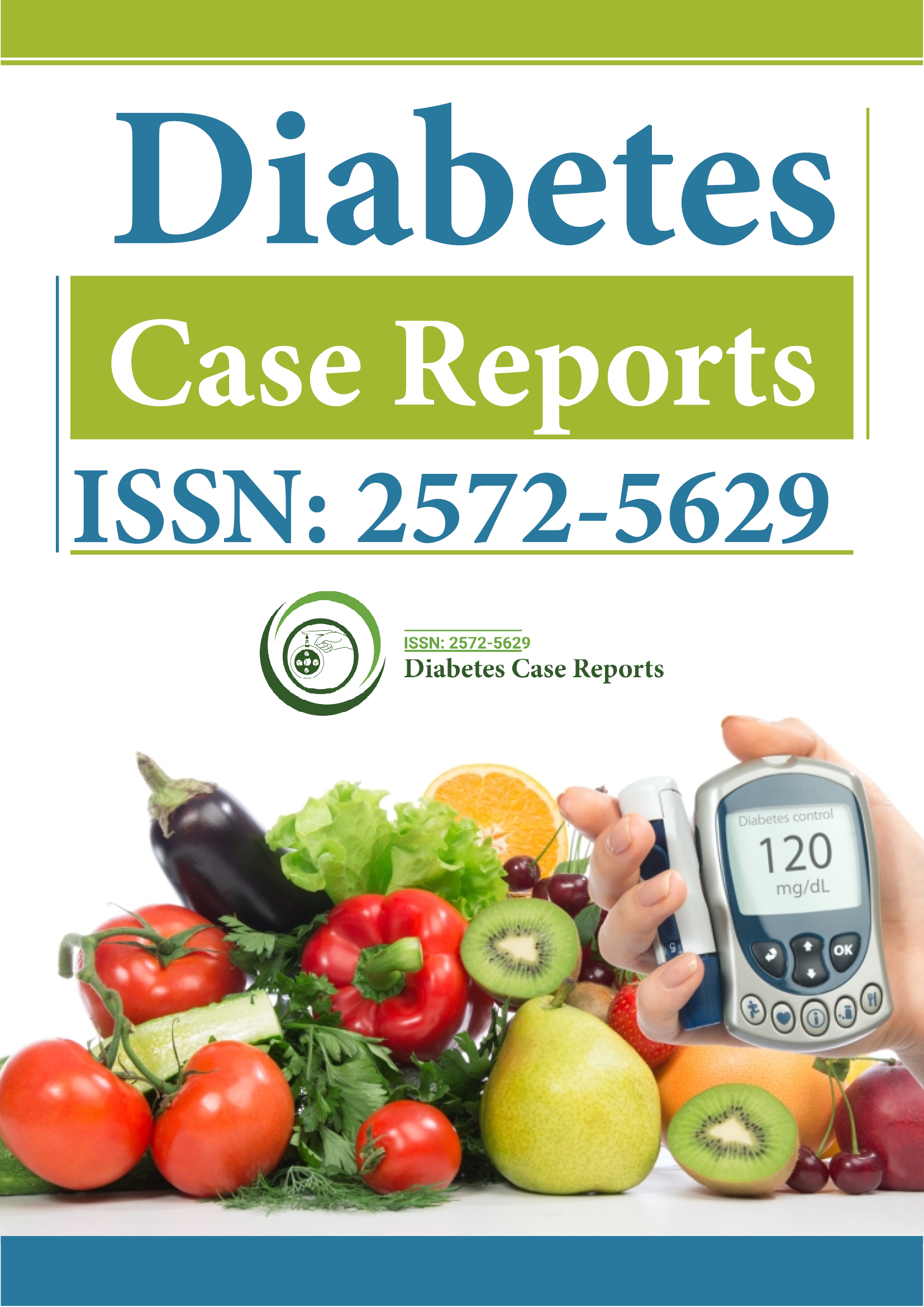Indexed In
- RefSeek
- Hamdard University
- EBSCO A-Z
- Euro Pub
- Google Scholar
Useful Links
Share This Page
Journal Flyer

Open Access Journals
- Agri and Aquaculture
- Biochemistry
- Bioinformatics & Systems Biology
- Business & Management
- Chemistry
- Clinical Sciences
- Engineering
- Food & Nutrition
- General Science
- Genetics & Molecular Biology
- Immunology & Microbiology
- Medical Sciences
- Neuroscience & Psychology
- Nursing & Health Care
- Pharmaceutical Sciences
Commentary - (2025) Volume 10, Issue 1
The Mechanisms and Clinical Implications of Hypoglycemia in Diabetic Patients
Dagmar Knofler*Received: 24-Feb-2025, Manuscript No. DCRS-25-29082 ; Editor assigned: 26-Feb-2025, Pre QC No. DCRS-25-29082 ; Reviewed: 12-Mar-2025, QC No. DCRS-25-29082 ; Revised: 19-Mar-2025, Manuscript No. DCRS-25-29082 ; Published: 26-Mar-2025, DOI: 10.35841/2572-5629.25.10.234
Description
Hypoglycemia is a medical condition characterized by abnormally low levels of glucose sugar in the blood, typically defined as a blood glucose level. Glucose is the body's main source of energy, especially for the brain, which relies heavily on a constant supply. When blood sugar drops too low, it can disrupt normal bodily functions and, if severe, become life-threatening.
Hypoglycemia is most commonly associated with diabetes, particularly in individuals who take insulin or certain oral medications that increase insulin production, such as sulfonylureas or meglitinides. These medications can cause blood sugar to drop too low if meals are skipped, delayed, or if physical activity is increased without adjusting food intake or medication doses. However, hypoglycemia can also occur in people without diabetes due to other underlying medical conditions such as insulinoma a rare insulin-producing tumor, severe liver disease, hormone deficiencies, or after prolonged fasting.
Symptoms of hypoglycemia vary depending on how low the blood sugar drops and how quickly the drop occurs. Early symptoms include shakiness, sweating, irritability, dizziness, rapid heartbeat, hunger, and anxiety. These symptoms are part of the body's natural response to low glucose, mediated by the release of adrenaline (epinephrine). If hypoglycemia is not addressed promptly, it can progress to more severe symptoms such as confusion, blurred vision, difficulty speaking, clumsiness, seizures, or even loss of consciousness. In extreme cases, prolonged or repeated severe hypoglycemia can lead to brain damage or death.
Treatment of hypoglycemia focuses on rapidly restoring blood glucose levels. For mild to moderate hypoglycemia, consuming 15 to 20 grams of fast-acting carbohydrates such as glucose tablets, fruit juice, regular non-diet soda, or candy usually resolves symptoms within 15 minutes. Blood glucose should be rechecked to ensure it has returned to a safe range, and additional food may be needed to prevent recurrence. In cases of severe hypoglycemia where the person is unconscious or unable to swallow, emergency treatment involves an injection of glucagon a hormone that raises blood sugar or intravenous glucose administered by medical professionals.
Preventing hypoglycemia involves careful management of diet, physical activity, and medication. People with diabetes are encouraged to monitor their blood glucose regularly, especially when changing medications, increasing exercise, or adjusting meal patterns. Health care providers work with patients to tailor treatment plans that minimize the risk of hypoglycemia while maintaining good blood sugar control. Education on recognizing symptoms and managing episodes is critical for patients and their families.
While hypoglycemia is a manageable condition, recurrent episodes can significantly impact quality of life. Fear of hypoglycemia may lead some individuals to maintain higher-than-recommended blood sugar levels, which can increase the risk of long-term diabetes complications. Therefore, balancing blood sugar control with safety is a key aspect of diabetes management.
Conclusion
In people without diabetes, identifying and treating the underlying cause of hypoglycemia is essential. This might include adjusting medications, treating hormonal imbalances, or managing other medical conditions. Rare cases of reactive hypoglycemia, which occur a few hours after eating, can be managed through dietary changes such as eating smaller, more frequent meals that are low in refined carbohydrates. Overall, hypoglycemia is a serious yet treatable condition. Prompt recognition and appropriate treatment are vital to prevent complications, and ongoing management strategies can greatly reduce the risk of recurrent episodes. Through education, regular monitoring, and individualized care, people at risk for hypoglycemia can maintain safe and stable blood glucose levels.
Citation: Knofler D (2025). The Mechanisms and Clinical Implications of Hypoglycemia in Diabetic Patients. Diabetes Case Rep. 10:234.
Copyright: © 2025 Knofler D. This is an open-access article distributed under the terms of the Creative Commons Attribution License, which permits unrestricted use, distribution and reproduction in any medium, provided the original author and source are credited
